We frequently learn that an increasing number of animal species are dangerously close to extinction due to various factors. This can be attributed to unchecked human development, excessive hunting, destruction of natural habitats, climate change and more, leading to a species loss rate that is 1,000 times above the natural rate. While the prospect is undoubtedly saddening, in some cases, extinction can actually be advantageous for particular species, particularly ours! From gigantic 42-feet-long mega snakes to airborne creatures the size of Giraffes, do take a look at these 25 awe-inspiring extinct creatures that you’ll be relieved are no more.

Pelagornis Sandersi
 www.ibtimes.co.uk
www.ibtimes.co.uk Thanks to its wingspan estimated to be up to 24 feet, Pelargonis Sandersi is apparently the largest flying bird yet discovered. It is probable that the bird was able to fly only by hopping off cliff edges and spent much of its time over the ocean, where it relied on wind currents rising up from the ocean to keep it aloft. Although considered the largest flying bird, compared to pterosaurs such as Quetzalcoatlus with wingspans of up to almost 40 feet, it was still pretty moderate.
Euphoberia (Giant Centipede)
 wikipedia.com
wikipedia.com Similar to the modern centipede in shape and behavior: the Euphoberia had a striking difference; it was over three feet long. Though scientists aren’t exactly sure of its diet, we do know that some modern centipedes can prey on birds, snakes, and bats. If a 10 inch ( 25 cm ) centipede can prey on birds, imagine what a 3 foot long (about 1 meter) centipede could do.
Gigantopithecus
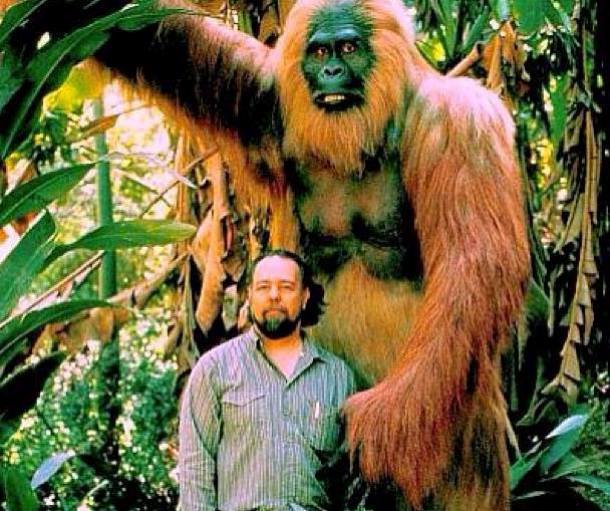 screenshotsnews.net
screenshotsnews.net Living between 9 million to 100,000 years ago in today Asia, Gigantopithecus was the largest ape on Earth. Standing up to 10 feet tall and weighing up to 1,200 pounds, the creature is believed to walk on all fours like modern gorillas and chimpanzees; however, a minority opinion favors bipedal, human-like locomotion. The features of its teeth and jaws suggest that the animal was adapted to chewing tough, fibrous food by cutting, crushing, and grinding it.
Andrewsarchus
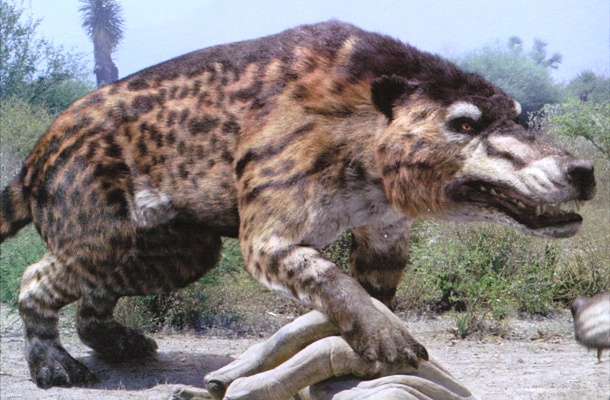 walkingwith.wikia.com
walkingwith.wikia.com Living during the Eocene epoch, some 45 to 36 million years ago, Andrewsarchus was a giant carnivorous mammal. Based on the founding of a skull and several bones, paleontologists suggest the predator might have weighed up to 4,000 pounds which would possibly make it the largest land-dwelling mammal predator ever. However, the behavioral patterns of this creature are not clear and some theories even indicate that Andrewsarchus could have been omnivorous or scavenger.
Pulmonoscorpius
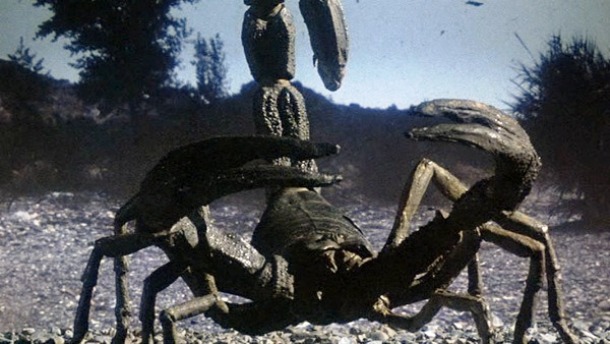 imgur.com
imgur.com Meaning “breathing scorpion“, Pulmonoscorpius is a giant species of extinct scorpion that lived during the Viséan epoch (approximately 345 – 330 million years ago) of the Carboniferous period. Based on fossils found in Scotland, it is believed that this species grew up to almost 30 inches long. It was a terrestrial creature feeding probably on small arthropods and tetrapods.
Megalania
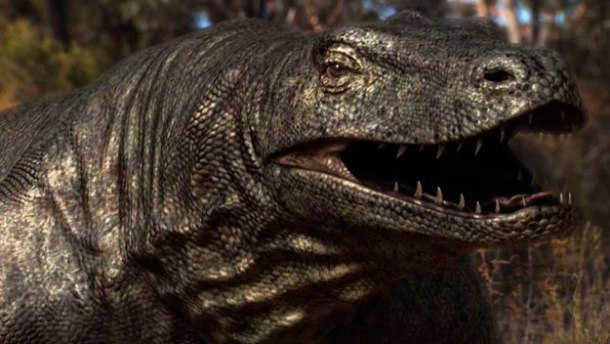 martinoraptor.blog.cz
martinoraptor.blog.cz Native to Southern Australia, Megalania was a giant lizard that became extinct as recently as just about 30,000 years ago which means the first aboriginal settlers of Australia might have encountered this creature. Scientific estimates regarding the size of the lizard vary greatly but it probably could have been about 25 feet long which would make Megalania the largest terrestrial lizard known to have ever existed.
Helicoprion
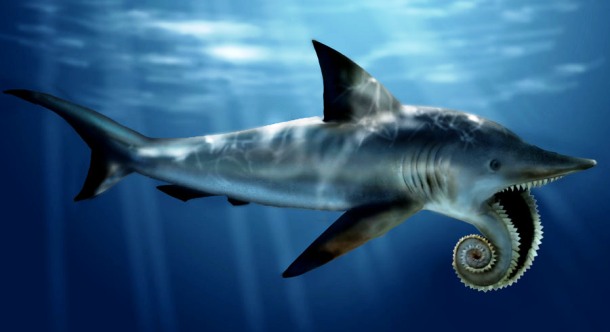 www.karencarr.com
www.karencarr.com One of the longest-lived pre-historical creatures (310 – 250 million years ago), Helicoprion is a genus of extinct, shark-like holocephalid fish most memorable for its spirally arranged clusters of teeth, called tooth whorls. Helicoprion may have grown up to over 13 feet long but its closest living relatives, the chimaeras can reach only 5 feet in length.
Entelodon
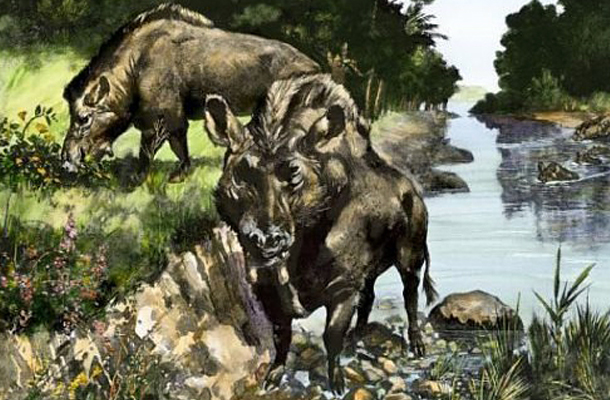 en.wikipedia.org
en.wikipedia.org Unlike its modern relatives, the Entelodon, was prehistoric pig-like mammal with a ravaging appatite for meat. Possibly one of the most monstrous-looking mammals ever the Entelodon stood on all fours and was almost as tall as a man. Some scientists suggest that Entelodonts were even cannibalistic. Hey, If they could eat their own, they could certainly eat you.
Anomalocaris
 www.evolutionnews.org
www.evolutionnews.org Native to probably all Cambrian seas, Anomalocaris – meaning “abnormal shrimp“ – was a genus of marine animals closely related to ancestral arthropods. Scientific research suggests that it was a predator feeding on hard-bodied sea creatures, including trilobites. They were notable especially for their unique eyes that, equipped with 30,000 lenses, are believed to be the most advanced eyes of any species of its time.
Meganeura
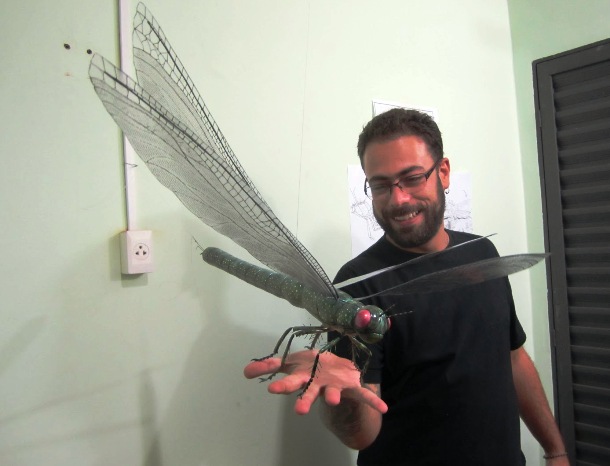 galleryhip.com
galleryhip.com Meganeura is a genus of extinct insects from the Carboniferous period which resemble and are related to the present-day dragonflies. With wingspans of up to 26 inches, it is one of the largest known flying insect species that ever lived on Earth. Meganeura was a predator with its diet consisted mainly of other insects and small amphibians.
Attercopus
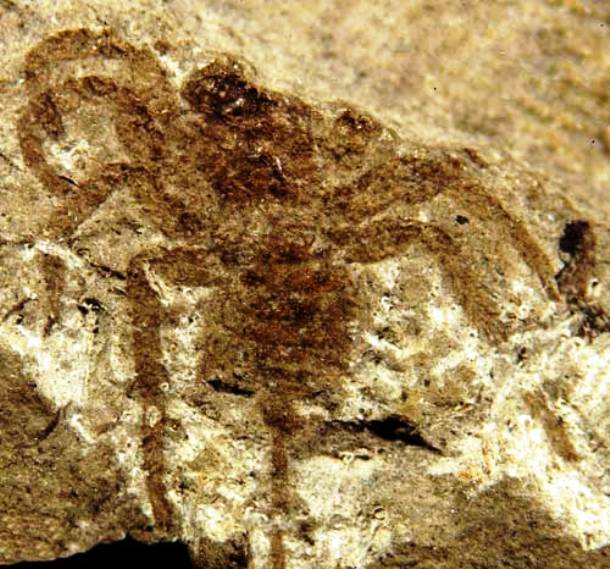 adorablespiders.tumblr.com
adorablespiders.tumblr.com Attercopus was a genus of spider-like animals with a tail resembling that of a scorpion. For a long time, Attercopus was considered the prehistoric ancestor of modern spiders but the scientists who discovered the fossil have found a few more in recent years and have re-thought their original conclusion. It seems unlikely that Attercopus spun webs, but it may have used its silk to wrap eggs, lay draglines or construct burrow walls.
Deinosuchus
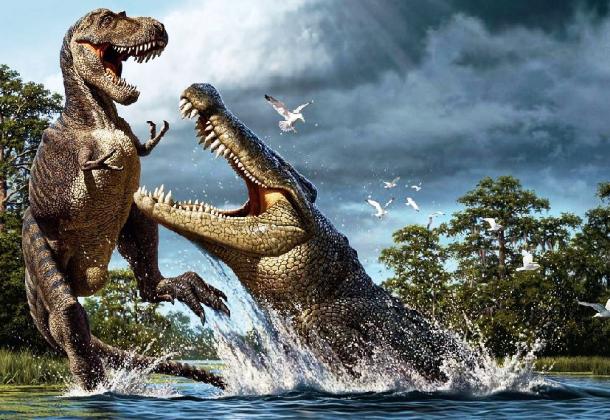 designeranimals2011.wikispaces.com
designeranimals2011.wikispaces.com Deinosuchus is an extinct genus related to the modern crocodiles and alligators that lived 80 to 73 million years ago. Although it was far larger than any of the modern species, it generally looked the same. Measuring up to 40 feet in length, Deinosuchus had large, sharp teeth capable of killing and eating sea turtles, fish and even large dinosaurs.
Dunkleosteus
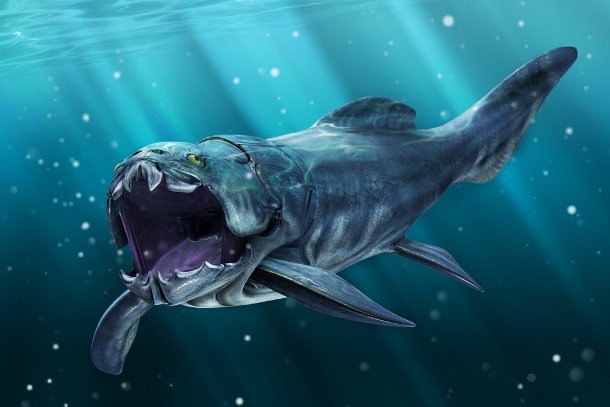 fel05.deviantart.com
fel05.deviantart.com Living in the Late Devonian period, about 380–360 million years ago, Dunkleosteus was a large hyper-carnivorous fish. Thanks to its terrifying size reaching up to 33 feet and weight of almost 4 tons, it was the apex predator of its time. The fish was heavily armored, which made it relatively slow but very powerful swimmer.
Spinosaurus
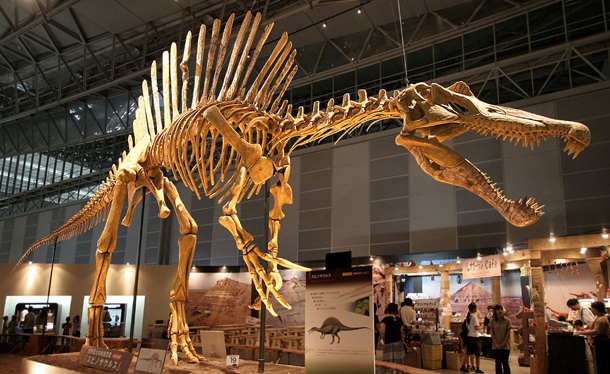 no.wikipedia.org
no.wikipedia.org Bigger than the T-rex the Spinosaurus is the largest carnivorous dinosaur of all times. Growing up to 18 meters long and weighing up to 10 tons, the Spinosaurus ate tons of fish, turtles, and even other dinosaurs. If this horror lived today, we probably wouldn’t.
Smilodon
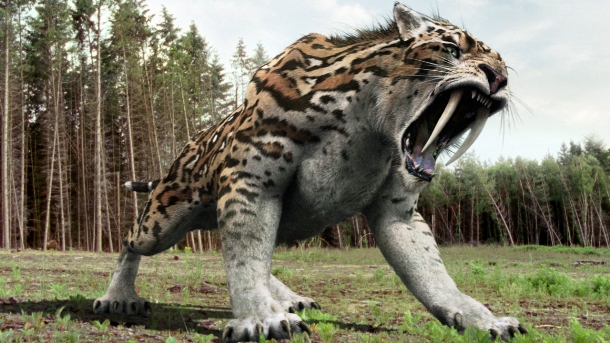 www.bbcamerica.com
www.bbcamerica.com Native to North and South America during the Pleistocene epoch (2.5 million – 10,000 years ago), Smilodon is the best known example of saber-toothed cats. It was a robustly built predator with particularly well-developed forelimbs and exceptionally long and sharp upper Cannes. The largest species could weigh as much as 900 pounds.
Quetzalcoatlus
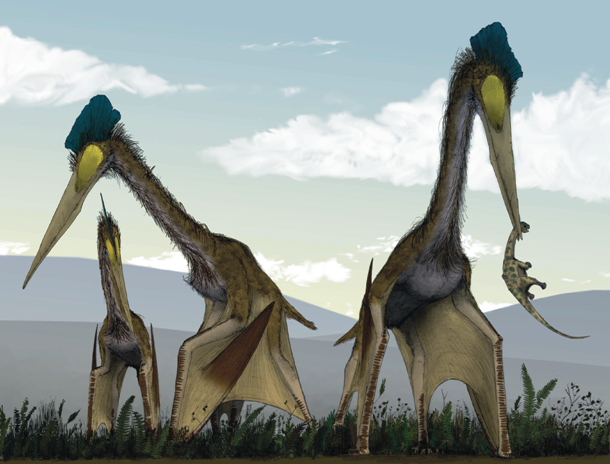 en.wikipedia.org
en.wikipedia.org With a wingspan of up to an incredible 40 feet, this giant pterosaur was the largest creature ever to fly, modern birds included. However, the size and mass estimates for these huge beasts are extremely problematic because no existing species share a similar size or body plan, and in consequence published results vary widely. One of the distinctive features common to all the specimens is an unusually long, stiffened neck.
Hallucigenia
 en.wikipedia.org
en.wikipedia.org The name Hallucigenia comes from the idea that these creatures are extremely bizarre and have a dream-like quality to them, much like a hallucination. The worm-like creature was from 0.5-3cm long with a head that didn’t include most sensory organs such as the eyes and nose. Instead the Hallucigenia had seven pincer-tipped tentacles on each side of its body, and then three pairs of tentacles behind those. To say that this creature is bizarre, would be an understatement.
Arthropleura
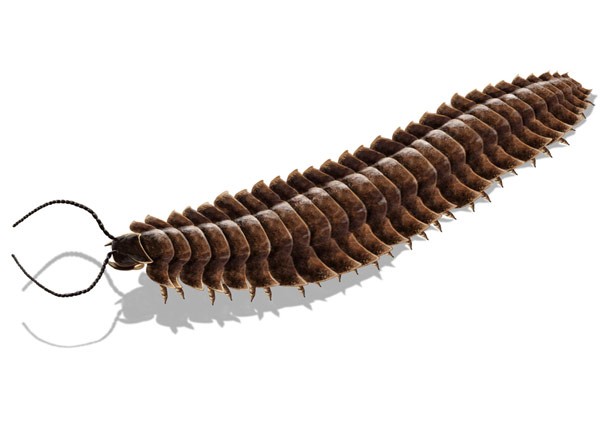
Native to the Upper Carboniferous (340 to 280 million years ago) of what is now North America and Scotland, Arthropleura was the largest known land invertebrate species of all time. Despite its immense length of up to almost 9 feet and earlier popular beliefs, Arthropleura was not a predator but an herbivorous arthropod feeding on rotting forest plants.
Short-faced bear
 en.wikipedia.org
en.wikipedia.org The Short-faced bear is an extinct bear genus that inhabited North America during the Pleistocene epoch until 11,000 years ago, which makes him one of the “most recent“creatures of the list. Its size, however, is pre-historic indeed. Standing on its hind legs, it was up to 12 feet tall with 14 feet vertical arm reach. The short-faced bear is estimated to have weighed over 3,000 pounds.
Megalodon
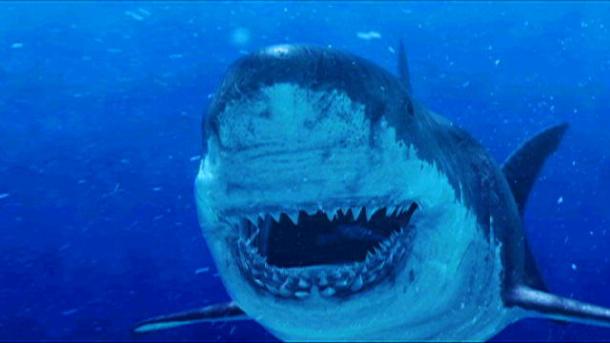 www.discovery.com
www.discovery.com Meaning “big tooth”, Megalodon is an extinct species of giant shark that lived approximately 28 to 1.5 million years ago. Thanks to its incredible length of up to 60 feet, it is considered one of the largest and most powerful predators that ever lived on the Earth. Distributed worldwide, Megalodon looked like a much larger and terrifying version of modern great white shark.
Titanoboa
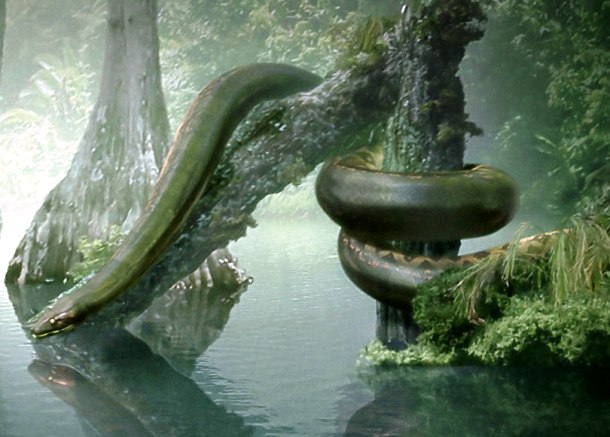 martinoraptor.blog.cz
martinoraptor.blog.cz Living approximately 60–58 million years ago, during the Paleocene epoch, Titanoboa is the largest, longest, and heaviest snake ever discovered. Researchers estimate that the largest individuals could have a total length of around 42 feet and weighed about 2,500 pounds. Its diet usually consisted of giant crocodiles and turtles that shared its territory in today´s South America.
Phorusrhacid
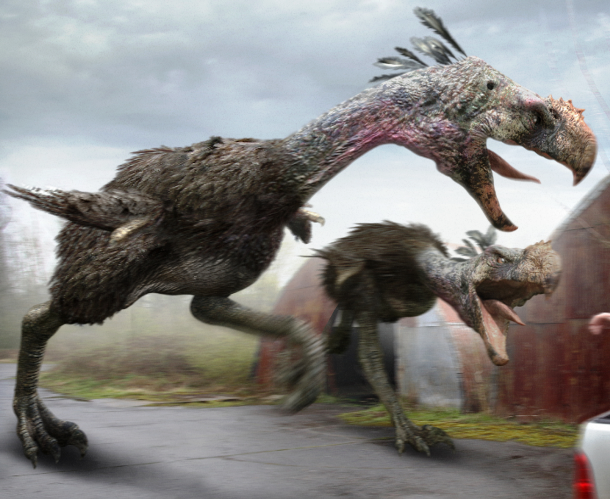 primeval.wikia.com
primeval.wikia.com Colloquially known as “Terror birds”, these pre-historical creatures are an extinct genus of large carnivorous birds that were the largest species of apex predators in South America during the Cenozoic, 62–2 million years ago. The largest flightless predatory bird to have ever lived on Earth, Terror Bird was up to 10 feet high, weighed up to half a ton and supposedly could run as fast as a cheetah.
Cameroceras
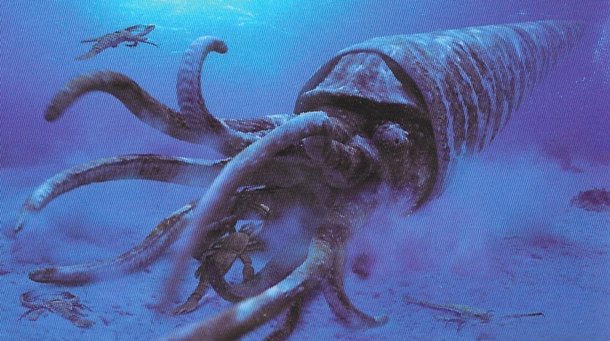 walkingwith.wikia.com
walkingwith.wikia.com Living during the Ordovician period, 470 to 460 million years ago, Cameroceras was a giant ancient ancestor of modern squids and octopi. The most distinctive feature of this mollusk was enormous cone-like shell and tentacles that it used for catching fish and other sea creatures. The estimates regarding the size of the shell vary greatly from 20 to 40 feet.
Carbonemys
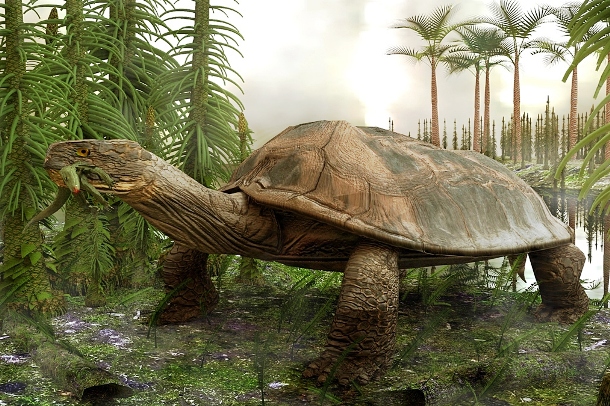 en.wikipedia.org
en.wikipedia.org Carbonemys is an extinct genus of giant turtle that lived some 60 million years ago, which means they survived the mass extinction that killed most dinosaurs. A fossil found in Colombia suggests it had a shell that measured almost 6 feet. The turtle was carnivorous with massive jaws and powerful enough to eat large animals such as crocodiles.
Jaekelopterus
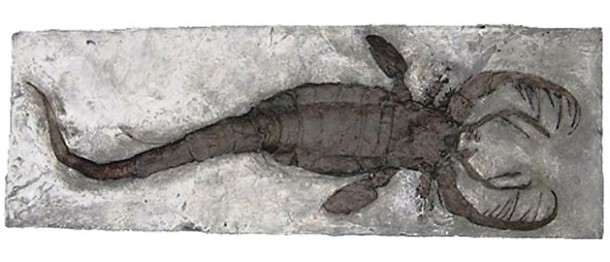 becuo.com
becuo.com At an estimated length of over 8 feet, Jaekelopterus is one of the two largest arthropods ever discovered. Although sometimes referred to as a “sea scorpion”, in fact, it was really more of a giant lobster, living in freshwater lakes and rivers in today´s Western Europe. This terrifying creature lived approximately 390 million years ago, earlier than most dinosaurs.



























